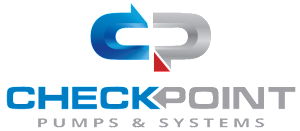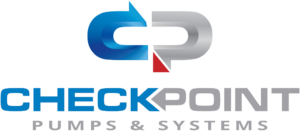Unveiling the Best Chemical Pumps: A Comprehensive Comparison Guide
In the world of industrial applications, the significance of chemical pumps cannot be overstated. According to a recent market research report by Grand View Research, the global chemical pump market size was valued at approximately USD 10.6 billion in 2022, with expectations to grow at a compound annual growth rate (CAGR) of 4.8% from 2023 to 2030. This growth is fueled by the increasing demand for chemical processing across various sectors, including oil and gas, pharmaceuticals, and water treatment. As industries evolve and technologies advance, selecting the right chemical pump becomes critical to ensure efficiency, reliability, and safety in operations. In this comprehensive comparison guide, we will unveil the best chemical pumps available in the market today, focusing on their types, applications, and essential features to help you make informed decisions.

Top 5 Chemical Pump Types for Industrial Applications
When it comes to industrial applications, selecting the right chemical pump can significantly impact efficiency and safety. In this guide, we explore the top five chemical pump types commonly used in various sectors. Each of these pumps has unique features tailored to specific needs, ensuring optimal performance under different operating conditions.
Centrifugal pumps are among the most widely used types due to their ability to deliver high flow rates and handle a variety of fluids. They rely on rotational energy to move chemicals, making them ideal for applications requiring continuous flow. In contrast, diaphragm pumps offer stellar performance when handling abrasive or viscous fluids, as their design effectively prevents backflow and ensures precise dosage. For industries dealing with corrosive substances, magnetic drive pumps present a leak-free option, utilizing magnets to eliminate any direct connection between the motor and the fluid.
Moreover, screw pumps stand out for their capacity to handle a wide range of viscosities, making them indispensable in many industrial processes. Lastly, peristaltic pumps are favored for metering and transferring delicate liquids, as they gently propel fluids through a flexible tube without causing shear stress. Understanding the particular advantages of these pump types is essential for any industrial operation looking to optimize their chemical handling processes.

5 Key Features to Look for in Chemical Pumps
When selecting the best chemical pumps for various applications, there are five key features to evaluate: reliability, material compatibility, ease of maintenance, performance efficiency, and safety features. The U.S. dosing pump market is projected to witness significant growth, driven by the increasing demand for precise fluid handling in sectors such as agriculture and manufacturing. According to recent market analysis, the diaphragm and peristaltic pumps are among the most popular types due to their robust performance and versatility in handling corrosive chemicals.
Reliability is paramount in chemical pumping applications, as any downtime can lead to substantial operational losses. Pumps made from compatible materials can withstand harsh chemical environments, which is critical for ensuring longevity. Additionally, the maintenance processes of modern pumps have been optimized for easier access to components, resulting in reduced maintenance time and costs. With performance efficiency being pivotal, technologies like magnetic drive systems enhance pumping accuracy while minimizing the risk of leaks, thereby improving overall safety in chemical processing. Understanding these features is essential for industries looking to optimize their pumping solutions effectively.
Comparison of Key Features in Chemical Pumps
Comparative Analysis: Centrifugal vs. Positive Displacement Pumps
When choosing the right chemical pump for your application, understanding the differences between centrifugal and positive displacement pumps is crucial. Centrifugal pumps work by converting rotational energy from a motor into energy in the fluid, making them ideal for low-viscosity fluids and applications that require high flow rates. These pumps are typically less expensive and easier to maintain, but they may struggle with thick fluids or fluids containing solids.
On the other hand, positive displacement pumps operate by trapping a fixed amount of fluid and forcing it out through the discharge. This design is perfect for high-viscosity fluids and provides a consistent flow rate regardless of pressure variations. However, they can be more complex and expensive, often requiring more maintenance.
**Tips:** When selecting a pump, consider the viscosity of your fluid and the operational requirements of your system. If your application demands high pressure and variable flow rates, a positive displacement pump may be the smarter choice. Conversely, for applications with lower viscosity and a need for constant flow, a centrifugal pump is generally more efficient and cost-effective. Always assess your specific needs to ensure optimal performance and longevity of the pump.
Unveiling the Best Chemical Pumps: A Comprehensive Comparison Guide - Comparative Analysis: Centrifugal vs. Positive Displacement Pumps
| Pump Type | Flow Rate (GPM) | Pressure Range (psi) | Viscosity Handling (cP) | Efficiency (%) | Maintenance Needs |
|---|---|---|---|---|---|
| Centrifugal Pump | 10 - 100 | 10 - 150 | 1 - 1000 | 75 - 90 | Low |
| Positive Displacement Pump | 5 - 50 | 50 - 300 | 500 - 10000 | 70 - 85 | Moderate |
| Submersible Pump | 15 - 200 | 20 - 100 | 1 - 300 | 80 - 95 | Low |
| Gear Pump | 1 - 50 | 30 - 200 | 100 - 5000 | 70 - 90 | High |
Top 4 Brands Dominating the Chemical Pump Market
In the rapidly evolving landscape of chemical pumps, several brands have emerged as frontrunners, consistently delivering high-quality products that cater to diverse industrial applications. According to a recent market research report by MarketsandMarkets, the global chemical pump market is projected to reach USD 3.8 billion by 2025, driven largely by increasing demand in industries such as oil and gas, water treatment, and chemical processing.
Within this competitive realm, four brands stand out for their innovation, reliability, and comprehensive service offerings.
Firstly, Grundfos remains a powerhouse in the chemical pump sector, lauded for their energy-efficient designs that not only optimize performance but also reduce operational costs. Their advanced smart pump technology allows for precise flow control, making them a preferred choice for many industrial applications.
Similarly, Flowserve continues to make waves with their extensive range of robust pumps designed to withstand the harshest of environments, underscoring their commitment to safety and durability.
Other notable mentions include Sundyne and Seepex, both of which have made significant strides in offering reliable solutions tailored to specific industry needs. As companies seek to enhance operational efficiency, the demand for these top-tier brands is unlikely to wane, solidifying their positions in the global market.
5 Essential Maintenance Tips for Longevity of Chemical Pumps
When it comes to ensuring the longevity of chemical pumps, regular maintenance is essential. According to a report by the Chemical Engineering Resource Group, proper maintenance can extend the life of a pump by up to 50%. One of the primary maintenance tips is to regularly inspect and replace worn-out components such as seals and gaskets. Neglecting these small parts can lead to leaks, which not only affect performance but also pose safety hazards in chemical handling.


Whether your solution requires a single pumping application or an expansive engineered system,
CheckPoint is committed to becoming your partner in excellence.



